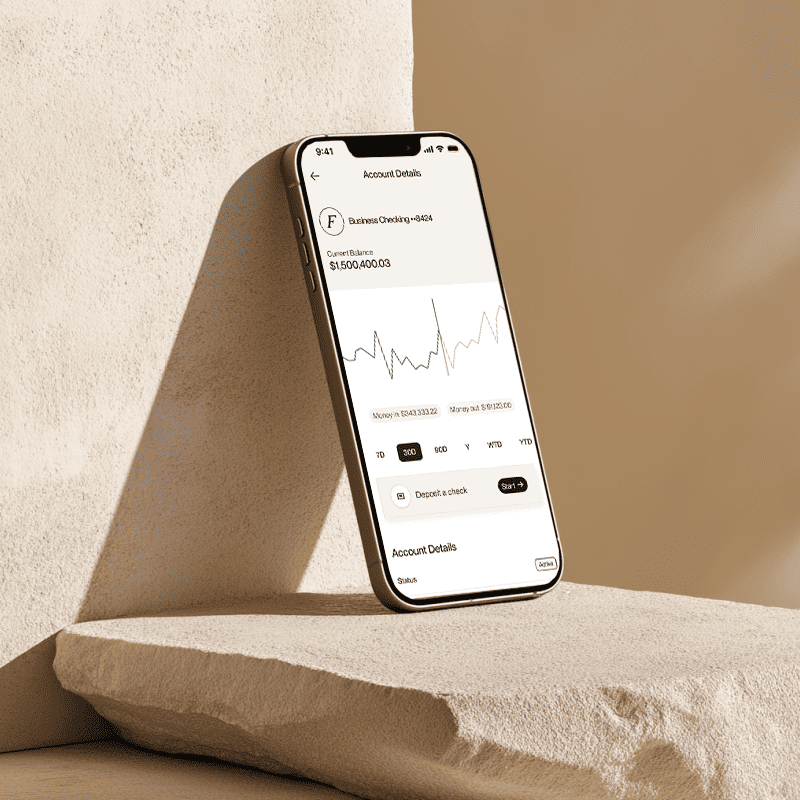What is Float in Finance? A Guide for Business Owners
The following article is offered for informational purposes only, and is not intended to provide, and should not be relied on, for legal or financial advice. Please consult your own legal or accounting advisors if you have questions on this topic.
For growing businesses, cash flow is everything. Effectively managing incoming and outgoing funds can mean the difference between scaling operations and hitting a liquidity wall. That’s where understanding “float” becomes essential.
But what is float in finance, and how can businesses use it strategically to preserve cash? Whether you’re just learning the ropes or looking to fine-tune your financial processes, this guide will demystify float and show you how you can use timing as a competitive advantage.
What Does Float Mean in Finance?
In finance, float refers to the time gap between when money leaves one account and when it’s actually withdrawn or deposited into another.
This temporary difference creates an opportunity for businesses to use funds they technically owe — or are waiting to receive — before those funds are officially moved.
Think of float as a cushion: It’s the period during which you have access to funds that are either en route or pending processing. Understanding how to manage this window effectively can help businesses improve liquidity and keep operations running smoothly.
Types of Float in Business Finance
When we talk about float in finance, we're usually referring to two types:
- Disbursement float: The time between when a payment is initiated and when the money is actually deducted from your account.
- Collection float: The time between when a payment is received and when the funds become available for use.
Both types of float create a time buffer that businesses can leverage to optimize cash on hand.
Why Float Matters
Float is more than just a financial curiosity — it’s a practical tool for managing your working capital. By maximizing financial float, businesses can:
- Preserve cash flow for longer
- Reduce the need for short-term borrowing
- Improve financial flexibility
- Create a buffer for unexpected expenses or slow revenue periods
Float can be especially valuable for startups and small businesses, where every dollar and every day counts.
How Businesses Use Float Strategically
Now that we've covered what float in finance is, let’s break down some of the ways companies use it to their advantage and create opportunities for better cash flow.
1. Extended Payment Terms
One of the most straightforward ways to create float is by negotiating longer bill payment terms with vendors and suppliers.
Benefits of longer payment terms:
- Gives your business more time to use cash before it's due
- Can help bridge gaps between accounts payable and accounts receivable
- Improves liquidity without increasing debt
For example, if your supplier gives you 60 days to pay an invoice, but you collect revenue from that order in 30 days, you effectively gain 30 days of float to allocate funds elsewhere.
2. Strategic Invoicing
Timing is everything — especially when it comes to getting paid. Businesses can reduce collection float — or decrease the time lag between when you receive payment and when those funds are available — by optimizing how and when they invoice customers.
Best practices include:
- Sending invoices immediately upon service or delivery
- Offering early payment discounts
- Using automated invoicing tools to avoid delays
By tightening up your accounts receivable process, you can minimize the float between completing work and receiving payment, improving cash availability.
3. Business Credit Cards
Credit cards are another powerful tool for creating float. When you make a purchase on a business credit card, you typically have a grace period — often up to 30 days — before payment is due.
Strategic advantages:
- Extends the time you can use cash before paying the bill
- Offers rewards or cashback that can be reinvested into the business
- Simplifies expense tracking and reconciliations
Using credit cards responsibly allows you to stretch your payment timeline without harming supplier relationships.
Smart Float Management with Flex
Flex offers businesses tools to manage cash flow with confidence. From built-in expense tracking to streamlined bill payments and flexible credit options, Flex helps you take full advantage of your float window — without sacrificing control or transparency.
With Flex, you can:
- Track incoming and outgoing payments in real time
- Set custom terms to align with your cash flow cycles
Use intelligent credit features to extend your runway
Float doesn’t have to be a mystery — or a risk. With the right tools, it becomes a lever for growth.
Final Thoughts
Understanding what float is in finance — and how to manage it — is a key component of business success. Whether you’re leveraging invoice timing, negotiating better terms, or using credit strategically, float can give you the breathing room you need to scale with confidence.
In today’s fast-moving business environment, liquidity is vital. And when used wisely, float isn’t just a buffer — it’s a business advantage.
Flexbase Technologies, Inc. (Flex) is a financial technology company and is not a bank. The Flex Business Credit Card is issued by Lead Bank, pursuant to a license from Visa U.S.A. Inc. and is only available to eligible commercial entities. Fees and terms and conditions apply. Applicants are subject to eligibility requirements.








.png)











.svg)